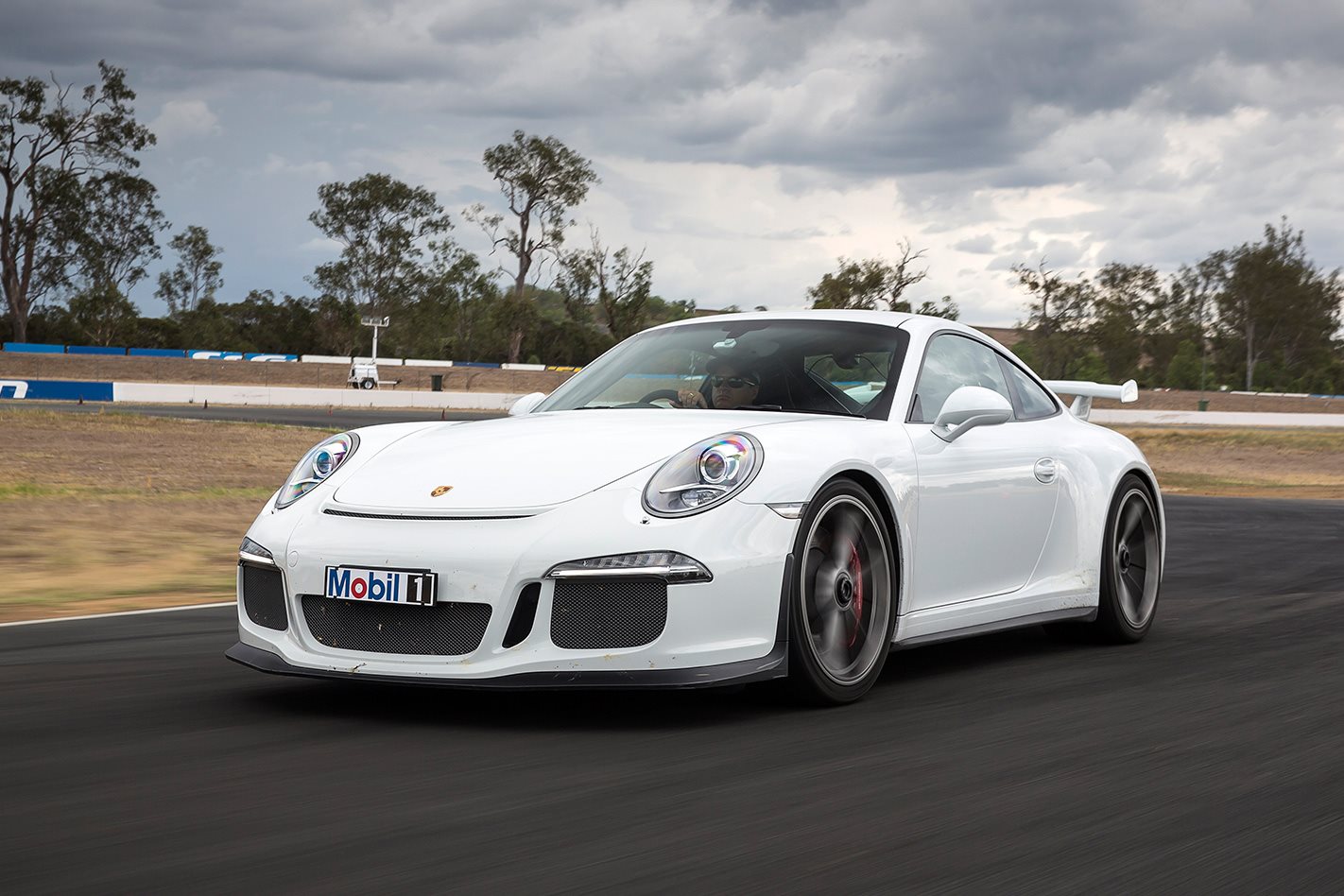It’s the easiest performance upgrade you can buy, yet also one of the least utilised.
No suspension upgrade, power increase or tyre choice will give as great a gain, for as little outlay, as improving the thing between the seat and the steering wheel.
My first track day was at Hobart’s Baskerville Raceway. Over-imbued with confidence like most 18-year-old males, my cockiness lasted two corners, at which point it became clear I was well out of my depth. My first proper lap was a 1:22, which fell to 1:17 by day’s end.
Over the coming months, with some practice and tuition, that fell to 1:13. Without a single car tweak, that’s a nine-second-a-lap gain. Still, that was many years ago now, so on the basis that you never stop learning, it’s time to go back to school.
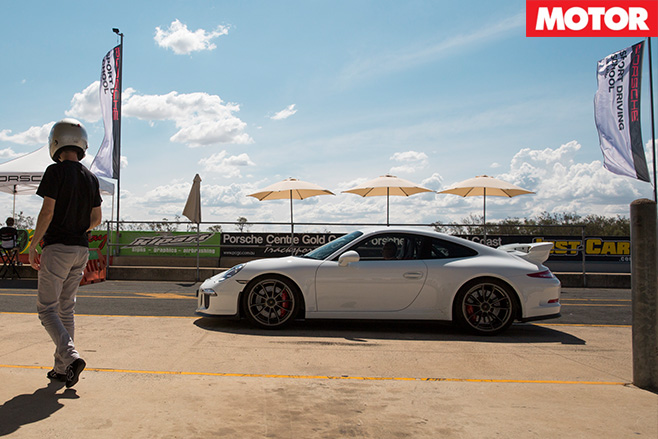
More than 70 courses will run in 2015, ranging from the $1397 Level 1 course, where attendees can sample the entire Porsche range, right up to the $6500 Level 5 course, which includes your own 991 Cup car and race engineer.
One step down is the ‘Master’ course; it’s exactly the same except the Cup car is replaced with the slightly more accessible 991 GT3 road car. This is the most popular course, booked out well over a year in advance. For your $3500 you receive a 991 GT3 to drive as hard as you like, a racetrack on which to drive it, and an instructor and race engineer to teach you how to drive it faster.
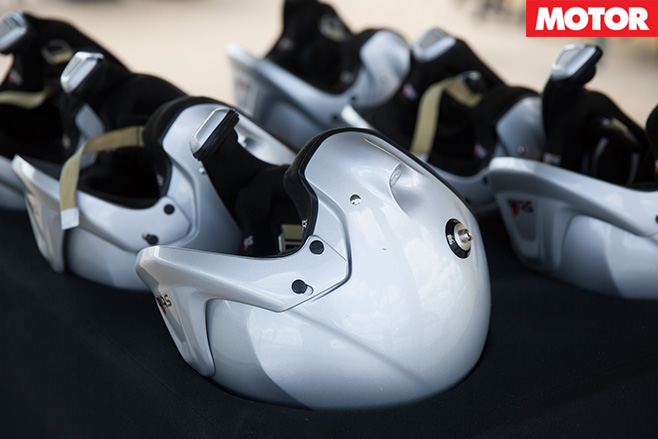
The classroom time is valuable, though, with a useful refresher on the basics delivered with directness and humour by Czech-born Aussie racer Tomas Mezera.
Best known for partnering Peter Brock at the Holden Racing Team in the mid-’90s, Mezera is an enormously accomplished driver, having won Bathurst, stood on the podium in the British Touring Car Championship and raced at Le Mans in a Porsche 962.
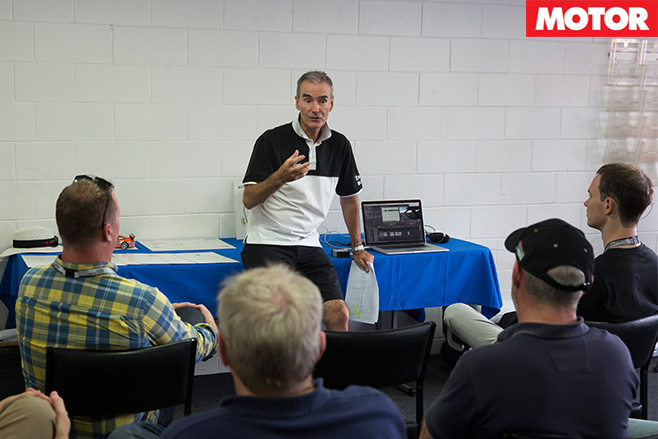
Our first session is not behind the wheel of the new GT3 but five-up in a Cayenne as Baird demonstrates the correct lines and braking points of Queensland Raceway’s club circuit. It’s a short track with a mere six corners, but it’s quickly apparent that there are plenty of places to lose time around its technical layout.
Once in the driver’s seat, both groups are encouraged to start slowly to familiarise themselves with car and circuit – there’ll be plenty of time for hot laps later, though some students take more notice than others.

I’m assigned Andy McElrea, who runs four cars in the Australian Carrera Cup championship, including Luffy’s. My best lap is a 68.1, almost 10 seconds off Bairdo’s benchmark. The slow time is not a surprise given the leisurely beginning. What is concerning is that mistakes are creeping in even at this speed.
All the instructors are big on taking it slow and building speed gradually. As McElrea succinctly puts it, “we don’t want you being fast in the middle of the day and crap at the end.
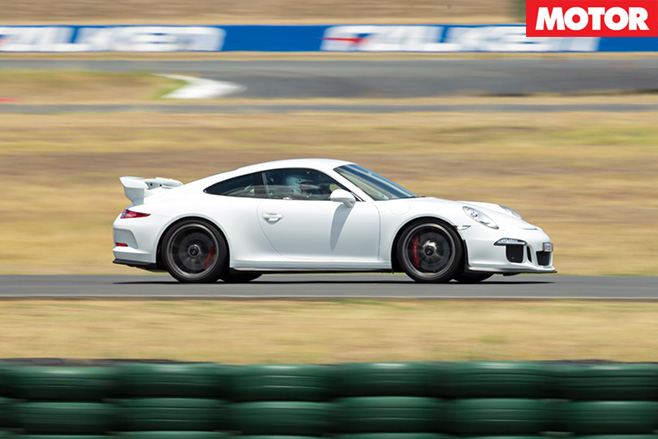
While today’s 911s are much friendlier to drive than those of old, their rear weight-bias requires a unique approach. Brake hard in a straight line, gently carry the brake into the corner to keep weight on the front tyres then slowly pick up the throttle just prior to the apex.
Too much brake on corner entry and the rear steps out sharply, too little and you’ll get understeer. Likewise, too much throttle too early and the nose will lift and you’ll understeer. It’s a delicate balancing act.
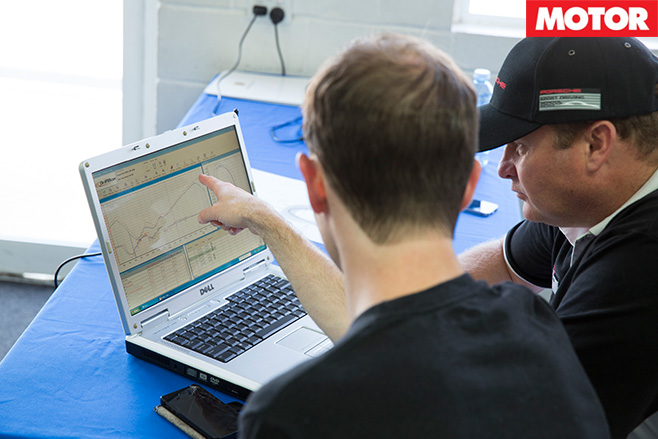
Left to my own devices the temptation would be to try and go faster everywhere but, thanks to the data, McElrea is able to point out where things are good and where there is more time to be made.
For example: “Turn one, we’re losing a little bit on the way into the corner [but] there’s really no more time to be gained from the apex of turn one to the apex of turn two – that’s textbook. Minimum corner speed in turn two is bloody similar to his (Baird); you’re getting fairly brave and then starting to run out of road.
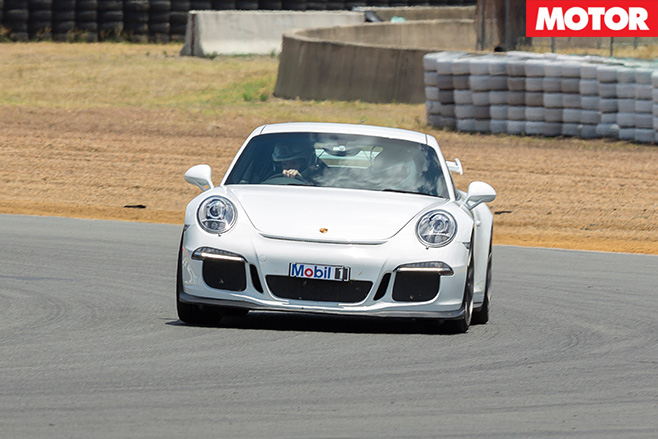
The news is less rosy later in the lap. Heading into turn five my data shows 0.2g of acceleration whereas Bairdo’s shows 0.2g of deceleration – ie, I’m doing exactly the opposite of what I should be. My approach to turn six is also completely wrong, with Bairdo braking 35m later on a completely different line.
Following lunch, it’s back in the passenger seat, this time in the GT3s. A third car is found and I’m installed next to Mezera. The headmaster might be more concerned with his golf handicap than his lap times these days (it’s a measly two, if you’re curious) but, man, can he still drive.
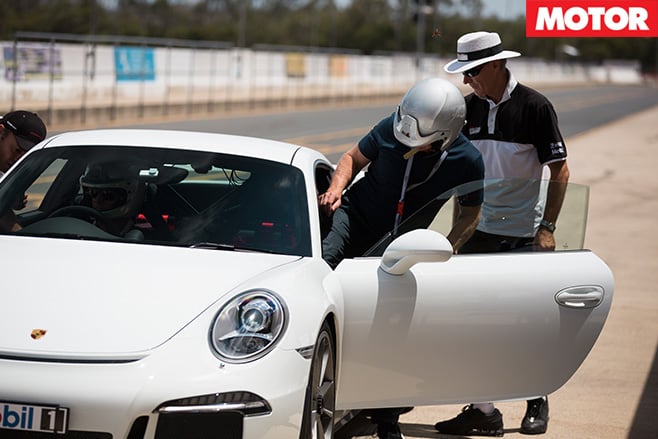
The third session doesn’t go so well. In trying to go even faster I’m bumping up against my talent wall, and occasionally putting one leg over it. Even in something as fast as a GT3, circuit driving in road cars quickly switches from ‘how fast can I go?’ to ‘how can I extract the most out of the tyres?’
More than once the electronics save me from embarrassment as the rear steps out sharply at 130-140km/h. Worse still, the VBOX chucks a wobbly, recording no data. So did the extra commitment pay dividends, or were the mistakes costing me time?
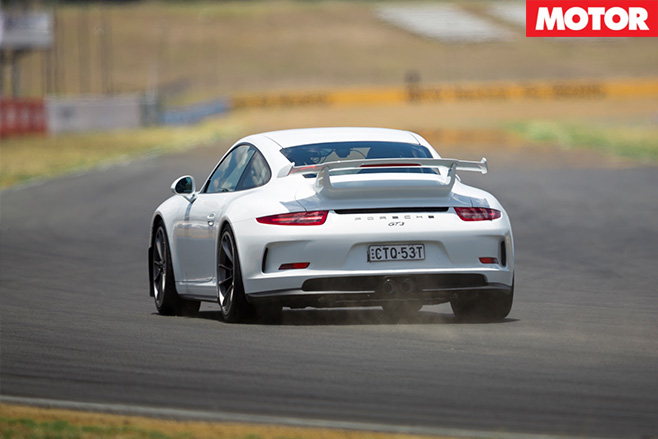
Look up, stay relaxed, brake late, carry more speed to the apex than seems wise, patience with the throttle, don’t fight the car. Even after almost 130 laps, the car just soaks up the punishment. The laps feel good, but were they faster?
Thankfully, McElrea doesn’t keep me in suspense – “59.7”. I’m over the moon. It might still be 1.5 seconds slower than Bairdo’s benchmark, but the combination of the right tuition and a pretty epic car has allowed me to drive faster than I ever thought possible. It’s just a shame this school doesn’t assign any homework.
5 Tips For Erasing Tenths
1. Look up – the further you look ahead, the better prepared you are 2. Be smooth – every input should be measured, don’t fight the car 3. Patience – don’t try too hard, tyres can only do so much 4. Start slow – build speed gradually to eliminate mistakes 5. Practice – it makes perfect, as long you know what to practice
What’s the damage?
Precision – $1397 (Full range) Precision Plus – $1397 (Full range) Performance – $1694 (Full range) Master – $3500 (911 GT3) GT3 Cup – $6500 (911 Cup)
Each course must be completed before qualifying for the next course.


